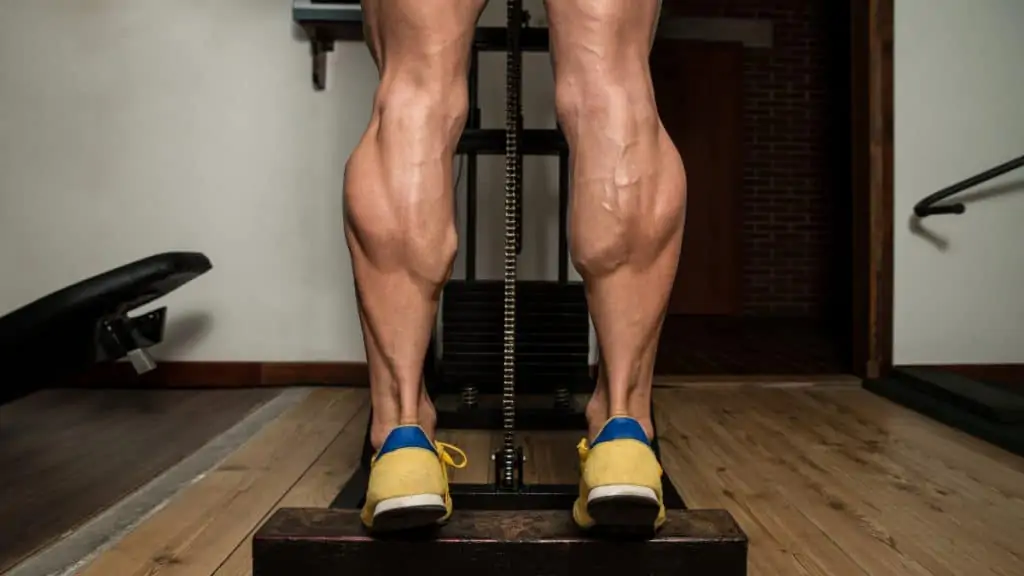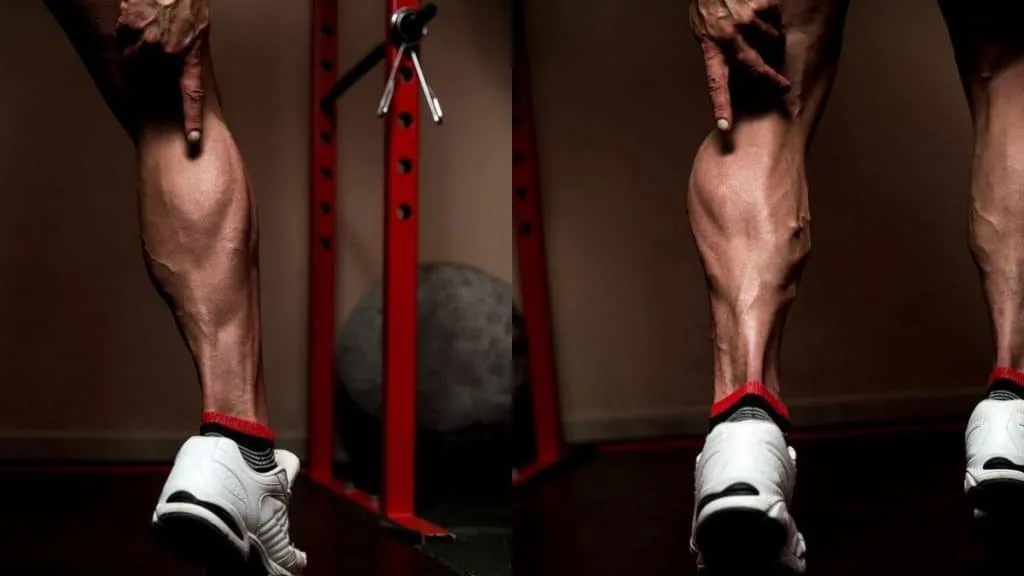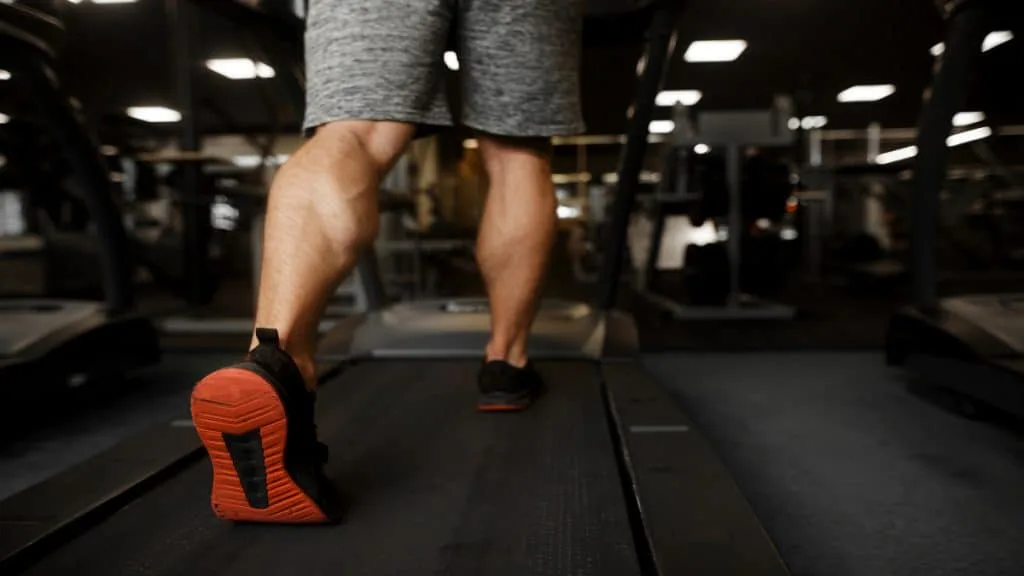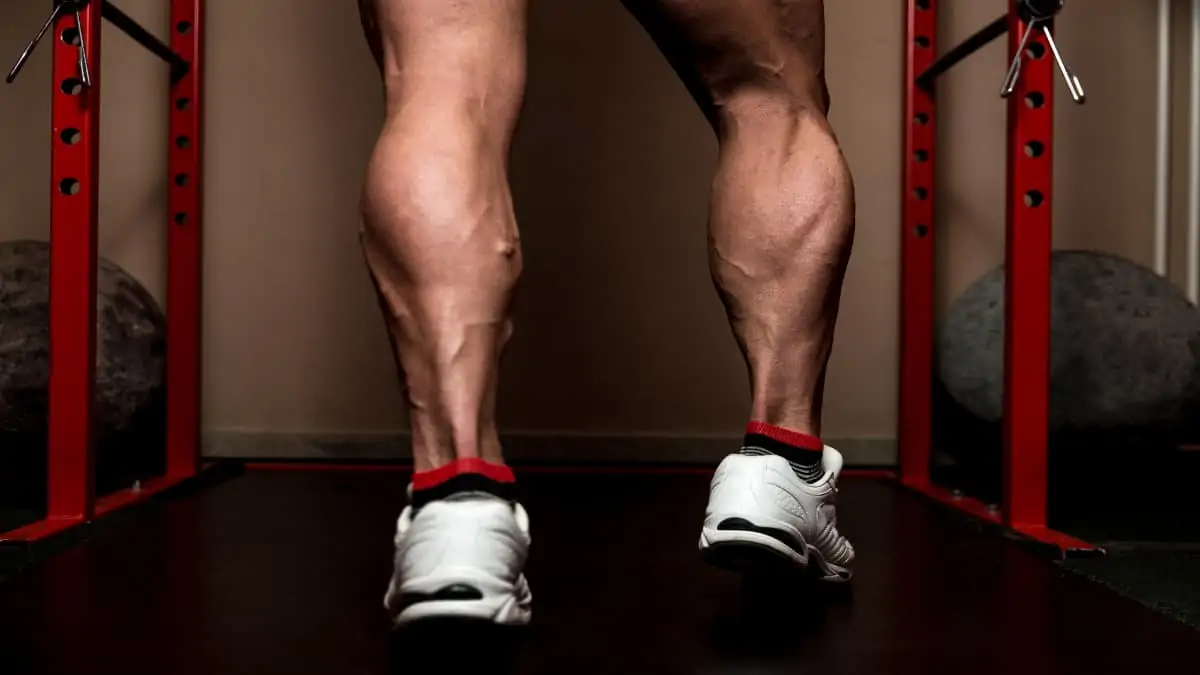Considering that the average male calf size is only about 15.5 inches, you have some seriously impressive calf development if your calves are 18 inches.
In addition to providing proven tips for building 18 inch calves, this guide uses real-life case studies of people who actually have 18″ calves to show you the work, dedication, and genetics that’s required to get your calves to the 18-inch mark.
See How Your Calves Compare:
Are 18 inch calves big?

How big are 18 inch calves?
18 inch calves are very big considering that most people’s calves—even those who lift weights—measure about 16 inches at the most.
As such, if you have 18″ calves, then you’re probably going to get a lot of attention when you wear shorts because your calves are so much bigger than average.
Of course, the leaner that you are, the more impressive your calves will look. This is simply because your calves will have better muscle definition if you have a relatively low body fat level. [1]
Additionally, most serious weight lifters go their whole training careers without every building 18 in calves.
This just goes to show how stubborn the calves can be.
While few people are truly cursed in the calf department, the calves typically require much more stimulation than other muscle groups in order to grow.
This is mainly because your calves are already more developed than your other muscle groups when you start lifting weights because they’re used to supporting your body weight for prolonged periods of time in your everyday life.
Can you get 18″ calves without direct training?

Although getting lean 18″ calves or 18.5 inch calves without training them directly is unlikely for most people, it’s definitely possible for people with good calf genetics, especially those who also play sports, do a lot of walking, or ride their bike regularly.
A fair few cyclists, for example, have 18 inch calves without performing resistance training (although you could argue that pounding the pedals is low-level resistance training). [2]
The fact that many ordinary people (and even more athletes) have better calves than most recreational bodybuilders tells you that the calves respond particularly well to high training volumes and consistent stimulation.
In other words, there’s a good case to be made that as long as you work your calves consistently, it doesn’t really matter what you do for them.
However, as you’ll learn in just a moment, there are likely more optimal ways to go about things if you want to build 18 inch calves as efficiently as possible.
18 inch calf case studies
See what it took people of various heights, weights, builds, and training experience to build an 18 inch calf circumference.
Case study 1: Ron Williams
Natural bodybuilder Ron Williams has 18 inch calves (18.25 inches, to be precise), and he shared one calf-building tip that 90% of people overlook.
You need to build the tibialis as well as the gastrocnemius and soleus if you want to maximize your calf development.
The tibialis is the muscle on the front of your shin. [3] Although it doesn’t have as much growth potential as the far bulkier gastrocnemius, building your tibialis will still stretch the tape measure further and make your calves look far more aesthetic.
Most people skip tibialis training altogether because their gym doesn’t have a specific machine for it. However, as Ron Williams shows, all you need to work your tibialis is a pair of resistance bands and a spare 5 minutes.
Connect your bands to a low anchor point and then hook the handles around your toes. From there, you simply move your toes towards your shins, which is known as dorsiflexion.
Case study 2: The BATMAN Says
The man behind the YouTube channel The BATMAN Says has 18 inch calves pumped. He shared some uncomfortable truths about the level of work that it takes to build 18 in calves.
This fella used to train his calves twice a week for an hour each time, doing about 20 sets per session!
Yes, that’s a lot of volume, and perhaps he could’ve got his calf gains from fewer sets. But unless you’re willing to train hard, it’s unlikely that you’ll ever see substantial calf growth unless your lower legs are genetically blessed.
This man, according to his bio, is also 6’1″. So there’s no excuse to neglect your calves just because you’re tall. Like any other muscle, your calves can and will grow bigger if you’re willing to put in consistent, heavy gym work.
Case study 3: Robert Oberst
Robert Oberst “The American Monster” was featured in a video on the OffTheRanch YouTube channel in which his calves were measured at 18.75 inches.
Robert Oberst is exceptionally tall. And even though taller people tend to have bigger ankles which, in theory, should give them the potential to build bigger calves than most people, a lot of tall lifters really struggle to develop their calves.
Considering that Robert is a strongman, it’s unlikely that he gives his calves the same amount of attention as a bodybuilder would. So the fact that they’re well over 18 inches is very impressive indeed.
How to get 18 inch calves

Since your calves are already used to supporting your body weight on a daily basis, the best and fastest way to build them is with direct training in the gym.
Breaking down the muscle fibers in your calves with heavy weight is a very different stimulus than relying on bodyweight resistance. If you wouldn’t just do push-ups for your chest or bodyweight squats for your legs, why rely on bodyweight calf raises to build your calves?
Like any other body part, the calves respond excellently to heavy weights and high-volume training.
Of course, they need time to recover too. But because they’re already accustomed to supporting your weight as you walk around, the calves can typically take more of a beating than other muscle groups.
Additionally, you need to eat in a calorie surplus if you want to get 18″ calves or 18.5 inch calves as quickly as possible. You needn’t get fat, but eating in an energy surplus will ensure that you have plenty of fuel for your training sessions, which in turn will help you to work out harder and recover quicker.
Moreover, increasing your body mass via a good bulking regime will make all of your circumference measurements bigger, and that most certainly includes your calves, especially if you train them directly and consistently.
Conclusion: Can everyone build 18 in calves?

Not everyone has the genetics to build 18 inch calves. If you have small ankles (let’s say 8.5 inches or less), then that’s likely an indication that you simply don’t have the genetics to carry a lot of muscle mass.
That’s ok. Just because you can’t build eighteen inch calves doesn’t mean that you can’t still build big and muscular calves.
The reality is that most people you meet don’t have anywhere near 18″ calves, even if they perform resistance training. So don’t feel bad if you think that your calves are too small because, if anything, people only give their best stats on the internet.
You can always grow your calves by training them with weights on a consistent basis and then nurturing that growth with a high protein calorie surplus diet. That’s what building the calves (and any other muscle group, for that matter) ultimately boils down to.
References
- Tinsley, G., PhD. (2017, October 1). How to Improve Body Composition, Based on Science. Healthline. https://www.healthline.com/nutrition/improve-body-composition
- Kassel, G. (2021, December 16). What Muscles Does Biking Work? Shape. https://www.shape.com/fitness/cardio/what-muscles-does-biking-work
- Dai, S., MD. (2021, December 21). Tibialis anterior muscle. Kenhub. https://www.kenhub.com/en/library/anatomy/tibialis-anterior-muscle

